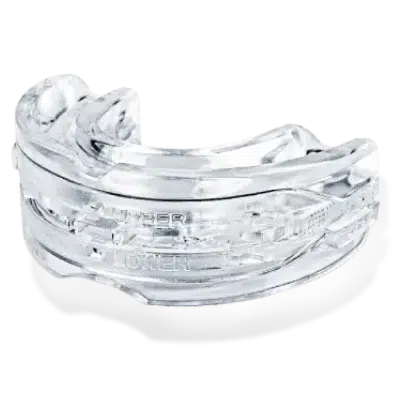Snoring occasionally affects approximately 45% of the population, and 25% of individuals are habitual snorers. Snoring is usually considered a nuisance, but it can have serious consequences. It’s estimated that snoring contributes to 38,000 cardiovascular deaths each year.
Snoring is more common in men than women and becomes more common with age. But what can be done if you or your partner can’t get a good night’s sleep because of the noise?
There are a number of treatments available for snoring. Some people opt for surgery, which is usually considered a last resort. One possible solution is a mandibular advancement device (MAD). This article will discuss:
• Mandibular Advancement Device?
• How does a MAD work?
• Sleep apnea
• Benefits of MAD
• Some frequently asked questions about MADs
• And more.
Keep reading to learn more about MADs and whether or not this snoring solution is right for you.
If you want to know the best snoring aids please check out our post:
Top 12 best anti-snoring devices UK of 2023
Table of Contents
What is a Mandibular Advancement Device (MAD)?
The mandibular advancement device also referred to as a MAD, is the most commonly used device for treating obstructive sleep apnea. It is a mouth guard worn during sleep and works by advancing the lower jaw, or mandible, forward. This helps to keep the airway open and prevents snoring and apneic events.
MADs are custom-made for each patient and can be fitted with different levels of advancement to ensure comfort and efficacy. In addition, MADs are often used as leading alternative for other therapies, such as nasal CPAP (which will be discussed later in this article) to improve sleep quality further.
How Does a MAD Work to Stop Snoring?
People snore for a variety of reasons. The majority of these conditions are linked to the tongue or throat tissue, partially obstructing the airway from and towards the lungs.
The mandibular advancement device is a great way to reduce any restrictions in your throat and avoid snoring. It moves the jaw and tongue and adds space for airflow by advancing them forward, away from the back of the mouth where tonsils are located when you sleep at night (or during the daytime).
This increases the size of upper airways reducing resistance and leading prevent airflow obstruction that causes loud breathing noises like male or female voices making undistinguishing sounds.
If you’re looking for a way to stop snoring, then MAD might be what’s needed. These devices typically fit within the mouth and are moulded specifically around teeth so they can provide an underlying platform upon which other parts of our body act as fixed frames while pushing forward against them incrementally It stops snoring once an ideal balance between tongue-base and soft tissue of the throat is reached – at this point stopping all noise completely.
Most snorers want a comfortable and simple solution to their snoring problem and wearing a SnoRemover, offer this simple yet, effective snoring solution they seek.
People who wear dentures or have severe dental issues should avoid wearing MADs.
Now let’s move to the detailed section about sleep apnea.
Download our free anti-snoring guide
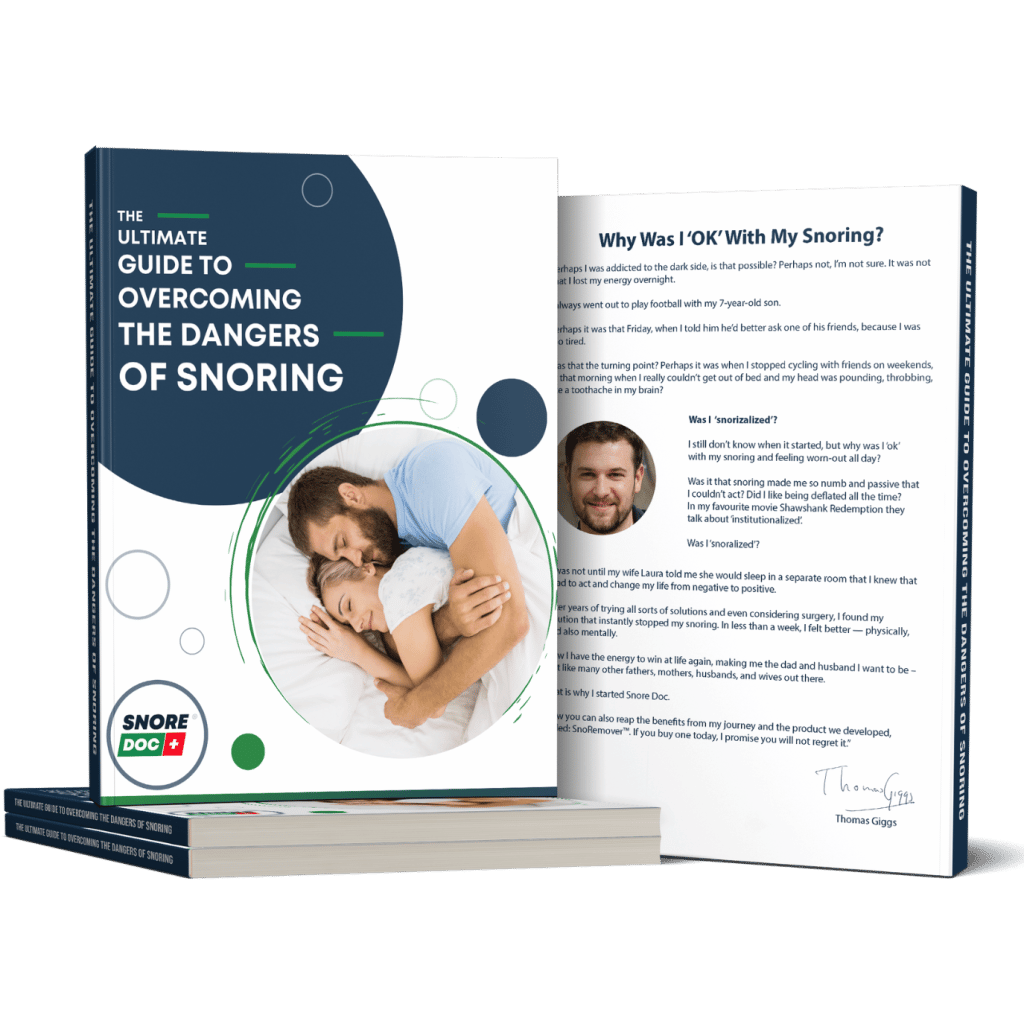
What Is Sleep Apnea?
You may wonder why we read about sleep apnea when we want to know about MADs. Snoring is often linked to obstructive sleep apnea (OSA), a sleeping disorder. Not all snorers have sleep apnea, but many people with sleep apnea do snore.
OSA affects roughly 1.5 million individuals in the UK; out of them, 330,000 are diagnosed.
When a person’s body relaxes, the throat does as well, and this causes it to narrow. The narrowing leads to snoring sounds when breathing because air can’t flow through easily, so they make noise while moving around inside their own mouth.
Sleep apnea is a sleep breathing problem in which the throat walls close entirely, preventing air from entering the lungs.
A person with sleep apnea may stop breathing for 10 to 30 seconds or more. This can happen several times during the night, preventing restful sleep.
Following are the common Sleep apnea symptoms:
• Loud snoring
• Restless sleep
• Falling asleep during the day
• Waking up with a headache or a dry mouth in the middle of the night
• Difficulty concentrating during the day
• Moodiness or irritability
• Feeling very tired during the day
Types of Sleep Apnea
There are three types of sleep apnea:
1. Obstructive sleep apnea (OSA): This is the most common type of sleep apnea. It occurs when the muscles in the back of your throat relax too much and block your airway.
2. Central sleep apnea (CSA): This type of sleep apnea occurs when your brain fails to send signals to the muscles that control your breathing.
3. Complex sleep apnea (OSA+CSA): This is the combination of both OSA and CSA.
Pro-Tip:
Water should always be within arm's reach of your bed. This will help prevent mouth dryness and morning headaches, two symptoms associated with sleep apnea. A humidifier can assist in retaining moisture in the air, particularly if you live in a dry climate.
Who Should Use a Mandibular Advancement Device?
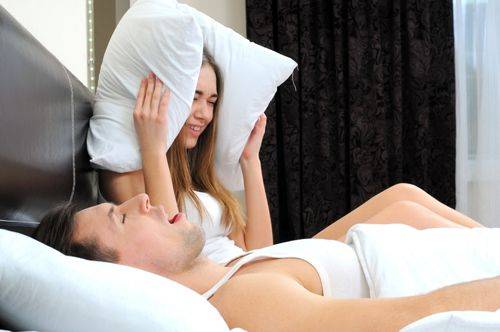
MADs are suitable for people who snore and/or have mild to moderate obstructive sleep apnea.
You may need a continuous positive airway pressure (CPAP) machine if you have severe obstructive sleep apnea. This device provides a constant and continuous flow of air through a mask that you wear over your nose and mouth during sleep.
The most important factor to consider when buying a MAD is that it should be custom-made for your mouth. This way, you will get the perfect fit and won’t have any problems with the comfort or integrity of use.
Types of Mandibular Advancement Devices
MADs come in many different designs and sizes. Some are made from acrylic, while others are metal. The device you choose will be based on your individual needs and preferences.
Here are some of the most common types of MADs:
1. Full Custom Made: This type of MAD is made from an impression of your teeth. It is then sent to a laboratory where it is custom-made for you. This device is usually more expensive than the other types, but it will fit your mouth perfectly and is long-lasting. Its harder plastic material will also increase its lifespan but may be inconvenient if too hard.
2. One-size-fits-all but personalized: The one-size-fits-all device can be adjusted to fit your mouth. It is made from a soft medical-grade silicone and is designed to be comfortable. This type of device is less expensive than the custom-made MADs, but it may not fit as well and may need to be replaced more often, i.e. 12 months.
3. One size fits most: With this device, you will need to trim it to fit your mouth. This is less expensive than the custom-made MADs, but it may not fit well and may need to be replaced more often.
What Are the Benefits of Using a MAD?
Achieving the perfect fit is essential for the effectiveness of your device. A well-fitting MAD will:
1. Help Reduce Snoring: MADs work by holding your lower jaw slightly forward. This prevents the soft palate from collapsing and blocking the airway. As a result, you will snore less.
According to a 2000 study of 22 people’s use of MADs for 12–30 months, these devices are useful in overcoming sleep apnea and snoring.
The majority of the participants wanted to continue utilizing the MADs. However, there were only a few individuals in the sample, so further research is necessary to confirm these findings.
2. Better Night’s Sleep: Because MADs can help reduce snoring, you and your partner will sleep better. In turn, you will feel more rested during the day. MADs can also help you sleep better by treating mild to =moderate obstructive sleep apnoea.
3. Improved Health: The use of CPAP or MADs for obstructive sleep apnea can be an effective way to reduce high blood pressure. However, there is no difference between these two therapies regarding reducing your blood pressure’s mean reading.
How to Use a Mandibular Advancement Device?
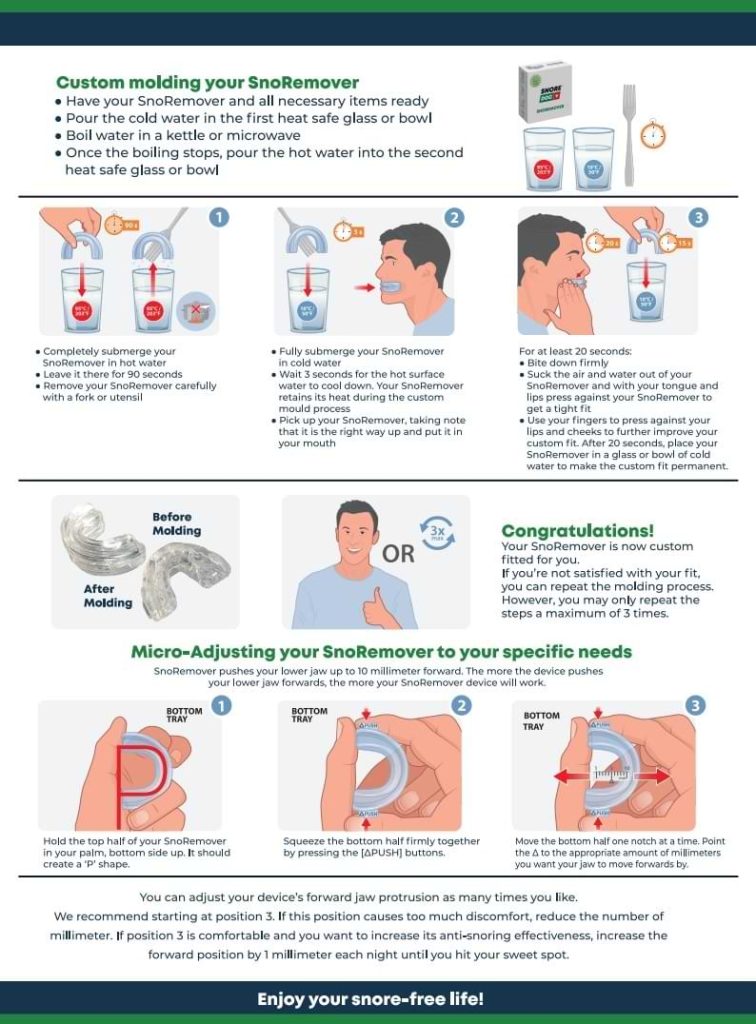
How to Get a Mandibular Advancement Device?
Although there is a variety of MADs available on the market, it’s essential to consult with a sleep specialist or dentist to find a suitable device for you.
• A sleep specialist can diagnose sleep apnea and recommend the most effective treatment option, which may include a MAD.
• A dentist can also help you pick the right device and ensure it fits properly. They can also make customizations to the device if needed.
When buying a MAD, it’s important to consider the source. Some devices are available online, but it’s best to purchase MADs from a reputable source like Snore Doc. They offer top-quality Mandibular Advancement Devices backed by a money-back satisfaction guarantee and are cheap to buy.
You can also read our buyers guide:
Anti Snoring Mouthpiece | A Buyers Guide
MAD vs. CPAP: Which One to Choose?
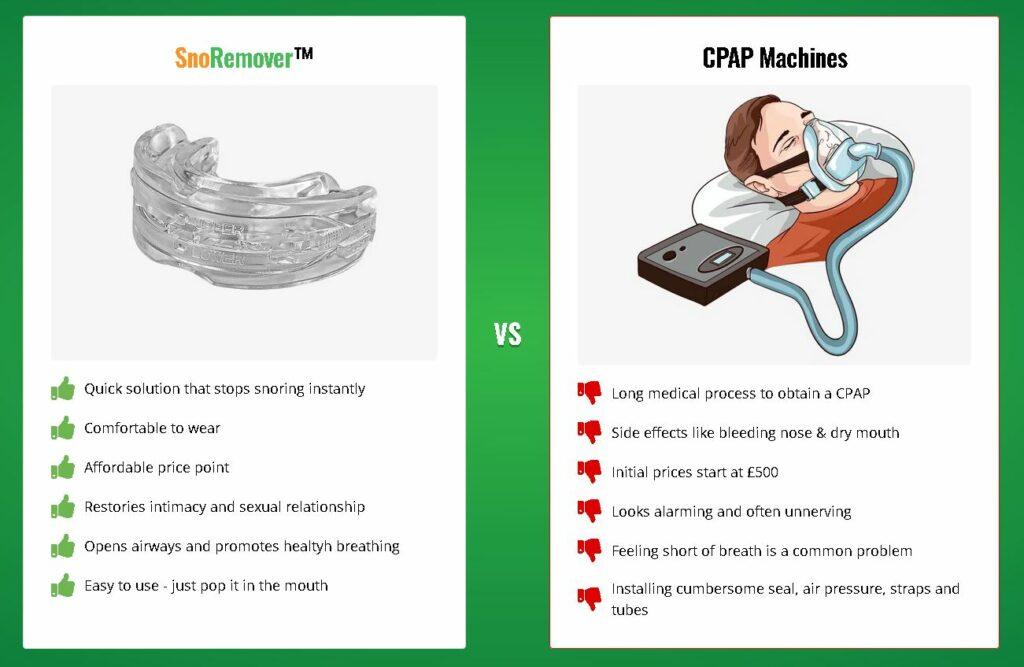
People with sleep apnea have two primary treatment options: a mandibular advancement device (MAD) or continuous positive airway pressure (CPAP).
There is a high rate of people abandoning treatment with CPAP, even though it’s considered the gold standard. Some experts believe this may be because they find other things to take care of first and don’t realize how bad their sleep apnea has become until later in life when the symptoms are more severe than ever.
The Journal of Thoracic Disease has just published a review article that suggests using MADs for people with mild sleep apnea or who struggle using a CPAP machine.
MADs are a more efficient, portable, and quiet alternative to CPAP. They also don’t require electricity so you can take them anywhere! However, they may not work for everyone, but it’s worth trying out if your sleep apnea is really bad or when travelling where there isn’t access to electrical outlets.
Things to Do While Wearing Mandibular Advancement Device
There are a few things you can do to increase the effectiveness of your MAD:
• Weight loss: This long-term solution might assist with sleep apnea symptoms by reducing fatty tissue around the neck.
• Change sleep position: Sleeping on your side may help reduce snoring and sleep apnea symptoms.
• Quitting smoking and alcohol: Both activities can help to decrease the risk of airway constriction.
Resource on Mandibular Advancement Device

If you’re interested in learning more about MADs, here’s an e-book, “THE ULTIMATE GUIDE TO OVERCOMING THE DANGERS OF SNORING“, from SnoreDoc. It’s a must-read for anyone wanting to improve their sleep and get rid of snoring for good!
Blog posts on Mandibular Advancement Device
- Where to Buy Mandibular Advancement Device?
- How to Clean Mandibular Advancement Device?
- What Is a Mandibular Advancement Device?
- Mandibular Advancement Device Side Effects
- Mandibular Advancement Device Dentist Near Me
- How Much Does a Mandibular Advancement Device Cost UK?
- List ItemMandibular Advancement Device Before and After
- 5 Best Mandibular Advancement Device Amazon 2022
- 6 Best Mandibular Advancement Device UK
FAQs on Mandibular Advancement Device
Now that we’ve gone over what a MAD is and how it can help let’s answer some frequently asked questions about the anti-snoring device.
Are there any risks associated with using a MAD to stop snoring?
The increased airflow through a MAD can make sleep-disordered breathing easier, but some people may experience side effects like toothache, gum soreness, or jaw discomfort. These side effects are usually mild and temporary and disappear once your body adjusts to the device.
It’s also important to note that a MAD should not be used by people with loose teeth, tooth decay, gum disease, or other dental problems. If you have any of these conditions, please consult your dentist before using a MAD.
What should I do if I experience discomfort or pain while using my MAD?
If you experience any discomfort while using your MAD, consult with your dentist or sleep specialist. But before you visit them, stop wearing the device for a few days to see if the discomfort goes away. If it persists, you should visit your dentist or sleep specialist to get fitted for a new device or make customizations to the device if needed.
How do I know if a MAD is right for me and my partner’s sleep apnea treatment plan?
If you or your partner snores loudly and you’ve noticed more fatigue during the day, it’s worth considering a MAD. Snoring isn’t always indicative of sleep apnea, but it can be a symptom.
If you’re unsure whether a MAD is the right treatment option, consult with a sleep specialist or dentist. They can help you determine whether a MAD is the best course of action for you and your partner.
How to clean my MAD?
You should clean your MAD every day, especially if you wear it every night. Use a soft-bristled toothbrush to brush the device, careful not to put too much pressure on it. You can also use our special Mandibular Advancement Device ‘Soak’ cleaning tablets.
What is the best device for sleep apnea?
Although CPAP is considered the gold standard for sleep apnea, some people prefer to use a MAD because it is more efficient, portable, and quiet. If you have mild sleep apnea or struggle when using a CPAP machine, a Mandibular Advancement Device may be a good option.
Are MADs Painful to Wear?
No. Most obstructive sleep apnea patients feel comfortable within a few days of use. There may be an initial period of adjustment where you experience some minor discomfort, but this should dissipate within a week or two.
How long does it take to get used to it?
Most people adjust to their MAD within a few weeks, but it may take longer for some people.
How much does it cost for a mandibular advancement device?
It depends on the type of MAD you choose. Some MADs can be purchased for as little as £50, while others may cost more than £500. Here at Snore Doc, our semi-custom-fit MADs start at £59, but it’s currently on sale for £59.
Does sleep apnea ever go away?
Sleep apnea may not go away on its own. However, it is more likely that sleep apnea will persist throughout your lifetime if you are overweight, have a family history of sleep apnea, or if you have certain medical conditions like heart disease or diabetes.
How Long Does a MAD Last?
A MAD will usually last between 1 and 3 years. However, depending on the type of device you have. If you bought an over-counter device, it may need to be replaced sooner than the one custom-made by your dentist.
Do I Need to Get a MAD Professionally Fitted?
MADs are considered one of the most comfortable and user-friendly types of sleep apnea treatments. However, you may still want a professional fitting to ensure the device is comfortable and effective.
Does My Health Insurance Cover MADs?
In most cases, health insurance companies in the UK will NOT cover the cost of a MAD. However, you will need to check with your insurance company to be sure.
Final Thoughts:
Dental appliances are an effective way to treat mild to moderate sleep apnea. If you’re considering a MAD, consult your dentist or sleep specialist to find out if it’s the right treatment for you.MADs are a safe and effective treatment option for sleep apnea, with a low risk of side effects. Most people tolerate them well and find them to be comfortable. If you think a MAD may be right for you, visit Snore Doc to learn more about our semi-custom-fit devices.

